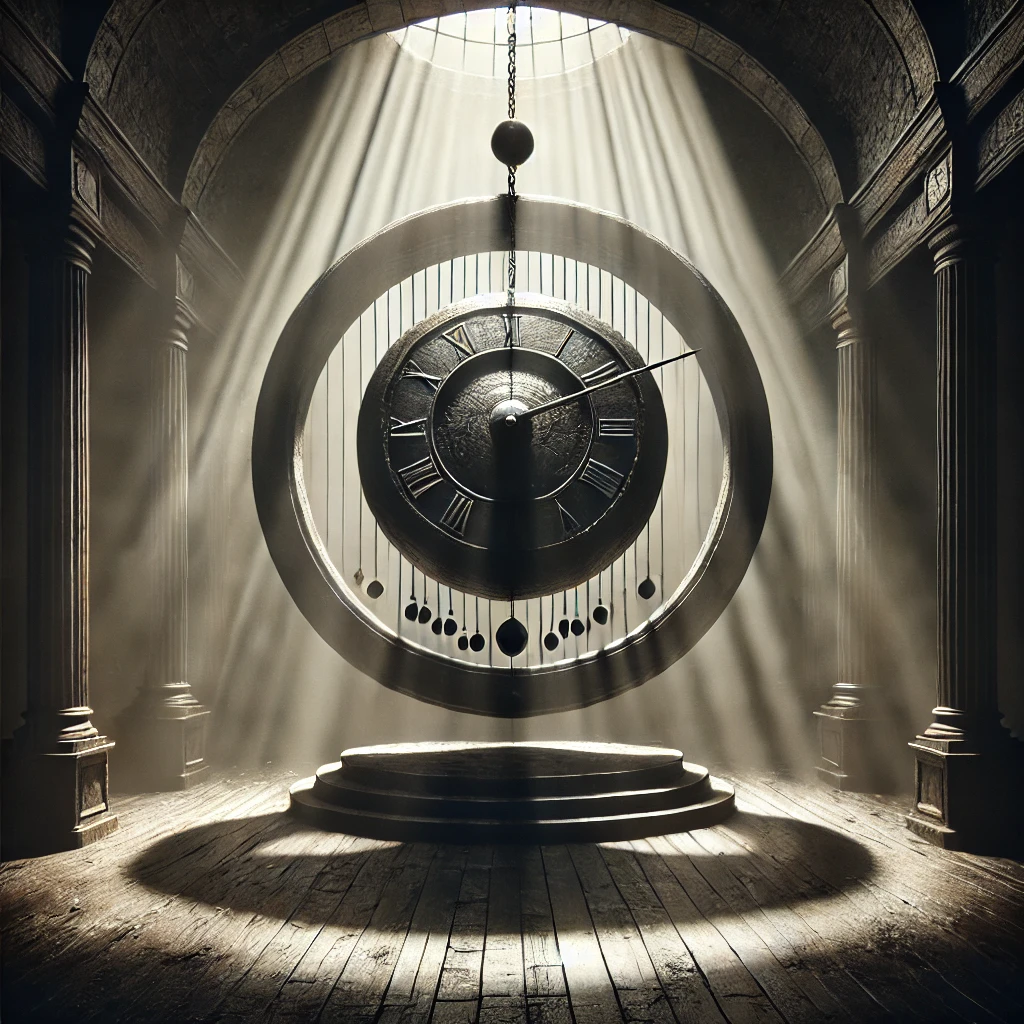Time gives us the space to explore, to remember who we are, and to integrate all aspects of self. The ebony clock, with its steady, measured chime, mirrors this purpose.

Among the many symbols in The Masque of the Red Death, the ebony clock looms as a powerful reminder of time’s inexorable march. Standing in the black room, this ominous clock marks the passage of each hour with a chime so profound that it momentarily halts the revelers’ merriment. Its presence is a stark contrast to the festive masquerade, serving as a steady, unavoidable reminder of mortality and the finite nature of human existence.
The Clock as a Symbol of Mortality
The ebony clock’s dark, heavy design and its placement in the black room underscore its symbolic connection to death. Every chime echoes the reality that time is slipping away, that each moment brings us closer to the inevitable. For Prince Prospero and his guests, the clock is a disruptor of their illusion of safety. No matter how extravagant their revelry or how impenetrable their fortress, the sound of the clock cuts through, commanding attention and silencing the room.
From my perspective, the ebony clock is more than a reminder of mortality; it is also a teacher. It invites us to reflect on how we relate to time. Are we using it to distract ourselves, as Prospero and his guests do, or are we allowing it to guide us inward? Time, when approached with awareness, becomes a companion on the journey of realization. Its ticking is not a threat but an invitation to live fully in each moment, to honor the experience of physical life as sacred.
Time and Awakening
For those on the path of awakening, time can feel like both a limitation and a gift. On one hand, it binds us to the physical world, reminding us of the impermanence of all things. On the other hand, it offers a structure within which we can experience growth, discovery, and integration. The chime of the ebony clock, though unsettling, serves as a wake-up call. It asks us to pause, to step out of the distractions of the masquerade, and to reconnect with what is real.
The clock’s placement in the black room adds another layer of meaning. The black room represents the final threshold, the place where light and dark converge and where transformation occurs. The clock’s chime, resonating through this space, becomes a call to embrace the shadow, to face the truths we have avoided, and to step into the fullness of who we are. It is a reminder that time is not our enemy but a guide, urging us to awaken before the final chime.
Reflection: How Do We Spend Our Time?
The ebony clock prompts an important question: how do we spend our time? Like the revelers, do we fill our days with distractions, avoiding the deeper call of the soul? Or do we allow time to be a teacher, guiding us to greater awareness and presence?
In the context of The Masque of the Red Death, the clock’s chime disrupts the illusion of control. It reminds us that no matter how much we try to wall ourselves off from the inevitable, time will find us. Yet this is not a message of despair but of grace. The awareness of time’s passage can inspire us to live more fully, to embrace each moment as an opportunity for growth and connection.
Time as a Companion on the Path
In spiritual terms, time and space are often seen as an illusion, a construct of the human mind. Yet within the experience of physical reality, it serves an essential purpose. Time gives us the space to explore, to remember who we are, and to integrate all aspects of self. The ebony clock, with its steady, measured chime, mirrors this purpose. It is not an adversary but a companion, marking the steps of our journey.
As we reflect on the symbolism of the ebony clock, let us consider our relationship with time. Are we running from it, like Prospero and his guests, or are we allowing it to guide us? Each chime is a reminder to pause, to breathe, and to reconnect with the present moment. And as we listen to its sound, we may find that time is not a force to be feared but a gentle teacher, helping us navigate the dance of life and the path of awakening.
You are an aperture through which the universe is looking at and exploring itself.
